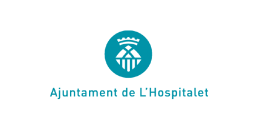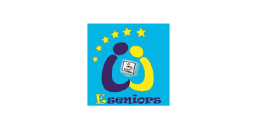Emmanuel Van der Auwera
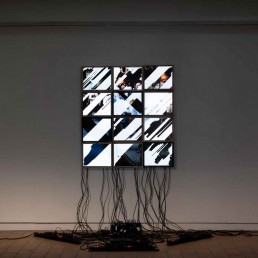
Emmanuel Van der Auwera
Brussels, Belgium
Emmanuel Van der Auwera (b. 1982, Belgium) lives and works in Brussels, Belgium. Through filmmaking, video sculpture, theatre, printmaking, and other media, Van der Auwera sets up encounters with found images that provoke a questioning of our visual literacy: How do images of contemporary mass media operate on various publics and to what end? With the formal rigor of a logician, the artist dissects how images are engineered, mastering specialized industry techniques and intervening on their protocol. In so doing, Van der Auwera brings us no closer to a monolithic truth, but constructs new paradigms for reading images and understanding our relationships with them. Van der Auwera is a 2015 Laureate of the Higher Institute for Fine Arts (HISK) post-academic course in Ghent, a 2015 Langui Award recipient of the Young Belgian Art Prize, and the first winner of the Goldwasserschenking awarded by WIELS and the Belgian Royal Museums of Fine Art. His work has recently been featured in exhibitions at WIELS (Brussels, BE), Centre Pompidou (Paris, FR), Palais de Tokyo (Paris, FR), Centro per l’Arte Contemporanea Luigi Pecci (Prato, IT), Ars Electronica (Linz, AT), Casino Luxembourg – Forum d’art Contemporain (Luxembourg City, LU), Mu.ZEE (Ostend, BE), Botanique (Brussels, BE), among others. His work has been acquired by the Dallas Museum of Art (Dallas, TX, US), KANAL – Centre Pompidou (Brussels, BE), Mu.ZEE (Ostend, BE), Fundación Otazu (Pamplona, ES), Collection de la Province de Hainaut – BPS22 (Charleroi, BE), the National Bank of Belgium – IACCCA (Brussels, BE), and the Jordan Schnitzer Museum of Art (Eugene, OR, US).
MindSpaces project
Michael Sedbon
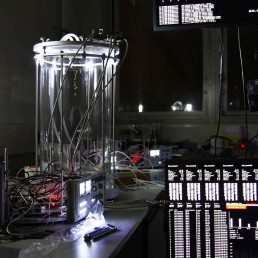
Michael Sedbon
Europe, Asia
Michael Sedbon is an Interaction Designer and artist working in Europe and Asia.
His work explores digital networked technologies and systems through their convergence with non-human intelligence (plants, unicellular organisms, insects, bacterias etc…) in regards to the Infocene problematics, seen as, our current cultural era where Information is the force having the biggest impact on human societies and environments.
He holds a Master in Interaction Design from the London College of Communication.
His actualize artist CV can be found here
MindSpaces project
In regards to the anthropogenic problematics and its relationship to architecture, The work I am carrying as part of the Mindspace initiative focuses on applying agent-based simulation principles to non-human agents. By doing so, I propose two applications of these technologies.
First of all, the project highlights the need to consider the importance of using wildlife and ecosystem simulation in the process of large scale architectural planning and designs to allow for structures to blend with natural systems in seamless ways.
But also, it bridges the fields of non-human manufacturing with algorithmic design: by simulating insect behavior, it is possible to make use of a design framework allowing iteration on artifacts embedding interactive cues (such as attractants and repellents) for non-human agents.
The general goal of such a process is to consider materials designed with the purpose to be activated by interactions with non-human life forms (bacterias, plants, insects, etc…)
The project itself is a use case of this design scenario where a particular species of ant is performing programmable architectural assemblage of artificial leaves which structure had been optimised through a custom made design software.
It is therefore composed of 3 parts:
Design of the Artificial Leaf:
I aim to create an automated prototyping virtual world in which weaver ants will be simulated. The result of this simulation will be sent to a parametric CAD environment (McNeel’s Grasshopper) informing a new iteration of the design.
Manufacturing of the Leaf
Research regarding manufacturing of artificial leaves are currently being conducted.
A manufacturing robot is planned to be automating the process
Ants biology and manipulation
An experimental setup is being built to host the population of ants and to allow fast iteration process.
Michael Sedbon Works
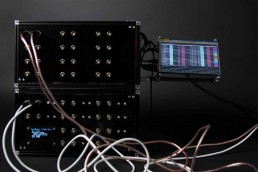
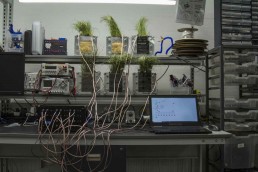
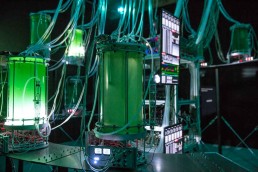
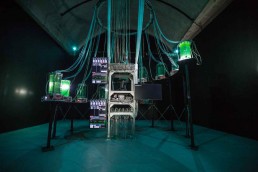
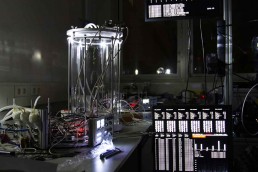
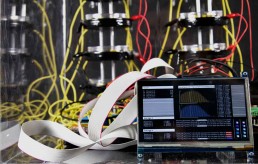
João Martinho Moura
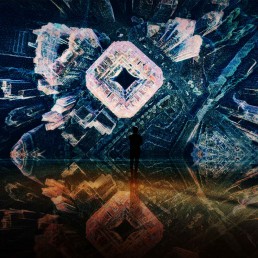
João Martinho Moura
Braga, Portugal
João Martinho Moura is a media artist and researcher born in Portugal, interested in electronic art and embodiment, virtual environments, computer music, and computational aesthetics. For the past 18 years, he has been adopting new ways to present the body and space in digital media. João Martinho Moura has a particular interest in art & science, perception, visualization, in the intersections between art and technology. Since the 2000s, His work has been presented internationally, several times, in more than 18 countries, some city-scale exhibitions. Author of various publications in the area of media arts, interfaces, embodiment, virtual reality, and visualization. As a media artist, he has collaborated in some international institutions such as ESA – European Space Agency, INL – International Iberian Nanotechnology Laboratory, NATO – North Atlantic Treaty Organization, UNESCO, and was selected artist at the European Commission’s STARTS and MindSpaces initiatives. In 2013, João Martinho Moura received the National Multimedia Art and Culture Award in Lisbon for his contribution in the area of digital arts in Portugal.
MindSpaces project
out > there
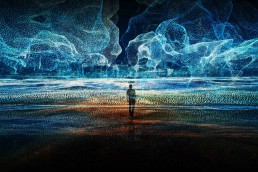
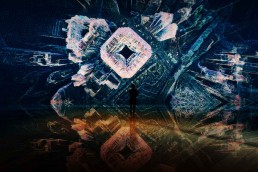
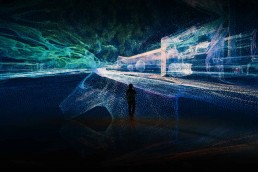
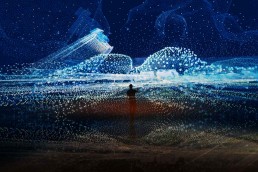
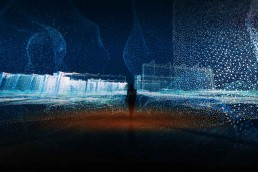
Emanuel Gollob
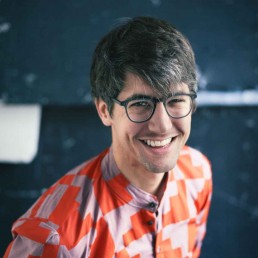
Emanuel Gollob
Vienna, Austria
Emanuel Gollob, born in 1991, is a freelance industrial designer based in Vienna. An important part of his work is the use of technical innovations, which are frequently repurposed and employed in an exciting way. He’s not interested in wholesale criticism or glorification of technical progress, seeing it as just a source of many-faceted tools for shaping our present and future. Working at the interface of art, technology, and society, his transdisciplinary activities provide insight into alternative scenarios of the present based on current innovations.
MindSpaces project
For my MindSpaces project, I am connecting to PUC 2 – Inspiring Workspaces. I am especially interested in VR spaces, which use GAN machine learning models to change their parametric aesthetic with the aim to support Non-Task brain activity. Various studies propose a connection between these brain activities and work-related processes regarding creativity, empathy and well-being.
My motivation for focusing on Non-Task brain activity in the workspace context grounds in my interest in understanding the influence of living in a digital culture on our attention and non-task modes, as well as understanding how brain processes might be shifting parallel to digitalization and how brain processes could be supported by external visual stimulation.
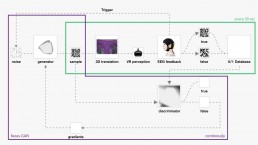
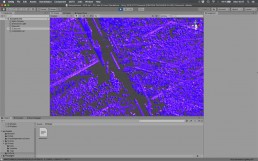
Emanuel Gollob Works
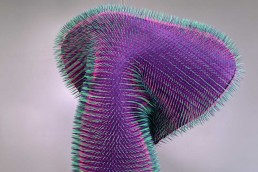
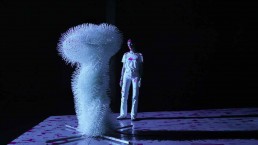
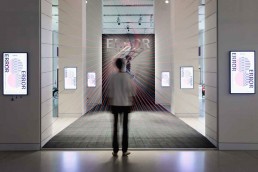
Sarah Derat
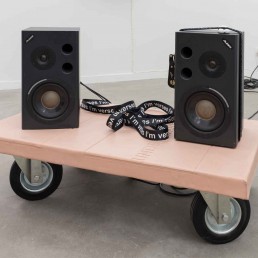
Sarah Derat
London, United Kingdom
Sarah Derat is a French artist, currently based in London, UK. Her practice is at the intersection of sculpture/installation and digital technology. For the past year and a half, Derat has been particularly interested in exploring the possible resonances that AI/automation have on language, cognition and society at large, via the prism of archeology and anthropology.
MindSpaces project
Sarah Derat Works
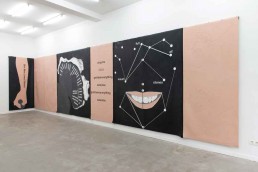
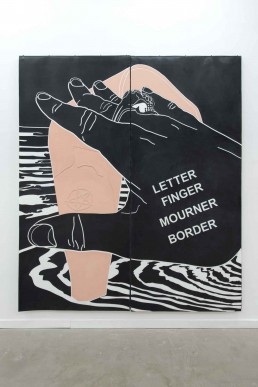
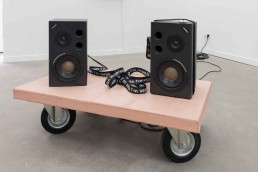
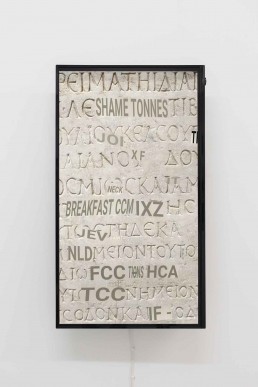
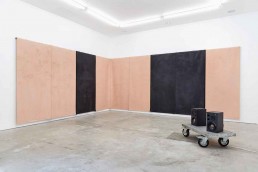
Haseeb Ahmed
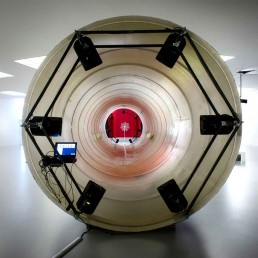
Haseeb Ahmed
Brussels, Belgium
HASEEB AHMED (b.1985) is a research-based artist. Originally from the US, he now lives and works in Brussels. He produces objects, site-specific installations, films, and writes for various publications. Often working collaboratively Haseeb integrates methodologies from the hard sciences into his art production. Currently he works with the von Karman Institute for Fluid Dynamics (VKI) in Brussels for his project, The Wind Egg Trilogy. The project blends art and aeronautics, myth and technology, to create new narratives for the present. Ahmed has been a lecturer at the Zurich University of the Arts, Royal Academy of the Art in The Hague, and Sint Lucas Antwerp School of Art and Design. Ahmed received his PhD in practice-based arts in at the University of Antwerp and Saint Lucas Antwerp School of Art and his Masters from the MIT Program in Art, Culture and Technology (2010). He has a Bachelor of Fine Arts at the School of the Art Institute of Chicago. Ahmed has been a resident at the Jan van Eyck Academie in Maastricht (NL) and the Skowhegan School of Sculpture and painting (US) among others. His work has been exhibited internationally including the Museum of Contemporary Art Chicago (US), The Gothenburg International Biennial of Contemporary Art (SE), the Museum Barengasse Zurich (CH), and De Appel in Amsterdam (NL). He is represented by Harlan Levey Projects in Brussels.
MindSpaces project
Pneuma In and Out
My project uses air as a medium to read the conditions of labor in a contemporary office space. As architecture is pushed towards sustainability it becomes less inhabitable. Energy consumption from heating/cooling air is reduced by sealed windows fitted with automated sun-blocking blinds. Using computational fluid dynamic simulations and working with Mindspaces partners I work to make both the invisible air and labor conditions visible at once. This project also explores the associations that the fluid medium of the air has with vitality, time, and creation across cultures historically with sculptural and virtual artworks.
Haseeb Ahmed Works
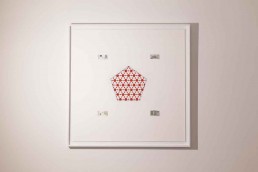
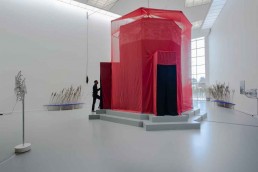
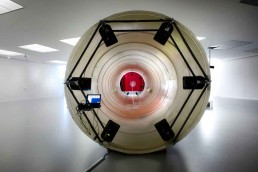
School of Creative Media, City University of Hong Kong
School of Creative Media,
City University of Hong Kong
Hong Kong, SAR, www.scm.cityu.edu.hk
SCM is the School of Creative Media of City University of Hong Kong. CityU was established in 1984 with support from the University Grants Committee of the Government of the Hong Kong Special Administrative Region. CityU offers professional education that prepares its students for the challenges and exciting opportunities opening up in Hong Kong, the Asia-Pacific region and throughout the world in business, science and engineering, energy and environment, law, creative media and social sciences. Through its extensive links with relevant industries, CityU provides real-life opportunities for students to learn from bachelor degrees and postgraduate studies to associate degrees and continuing education. In addition, CityU sees research as one of the key elements in its strategy to become a leading university in the region. The University concentrates its resources to achieve excellence in selected areas of research, and focuses on applied research with direct local and regional relevance.
In recent years, CityU has performed strongly in university rankings and is currently among the top 10 in Asia and the 55 in the world QS ranking. It is a fast-growing institution with 20,000 students, including 6,500 postgraduate students, and about 1,000 academic staff in science and engineering, business, creative media, law, the humanities and social sciences, energy and environment, and veterinary medicine.
The School of Creative Media is Asia’s leading school in digital media arts and creative technologies. Ourinternationally renowned faculty work at the intersection between art, technology, education, entertainment, and entrepreneurship. The research program of the School is organized around the Center for Applied Computing and Interactive Media under the leadership of Professor Jeffrey Shaw and Dean Richard Allen, which is an incubator for new forms of digital creativity and technology innovation funded though individual and collaborative research grants. We sponsor a series of major conferences including the forthcoming Art Machines: International Conference on Computational Media Art (Jan 4th-7th 2019). Current research focusses on the following activities:
Digital Preservation and Exhibition of Intangible Cultural Heritage. Multiyear funded projects on a range of Digital Heritage Projects including Kung Fu Digital Archive, Atlas of Maritime Buddhism, and Confucian Rites.
Augmented Cognition Through Immersive Technologies. Empirical study of how AR/VR can better meet user’sneeds.
Interactive Technologies for Accessibility. Researchers work on improving mobile interaction, developing new interactive artifacts for children, and creating new technologies to alleviate the problems of the disabled.
Brain-Computer Interface. Novel art and design protocols are being developed based on neuro-feedback that results both in real-time shape generation and 3D printing of brain-generated forms.
Extended Reality Lab. A new research lab focuses on the development of novel augmented reality interfaces, wearable displays, prosthetics, and physical computing artifacts.
Gaming Lab. This lab researches gaming and e-sports.
Machine Learning Art. Research on the development of new forms of artistic practice that utilize machine learning protocols.
Blockchain Technology for Creative Industries. Interdisciplinary research on the value, use and development of blockchain technology in the creative and culture industries.
The research faculty affiliated with the center are Professor Jeffrey Shaw, Professor Maurice Benayoun, Professor Christian Wagner, Dr. Alvaro Cassinelli, Dr. Christian Sandor, Dr Ayoung Suh, Mr. Tobias Klein, Dr. Miu Ling Lam, Dr. Kening Zhu, Dr. Hongbo Fu, Dr. Hector Rodriquez, Dr. Thomas Laurenzo, Dr. Max Hattler, Professor Felipe Cucker, Dr. Olli Tapio Leino, Dr. Damien Charrieras, Dr. Daniel Howe, Dr Kow Yong Ming, Mr. Ip Yuk Yiu, Mr. Yim Chin Pang, Dr. Patrice Pujol, Dr Can Liu, Dr. Manfred Lau.
People
Prof. Benayoun, Maurice
Artist, Theorist, Curator
Klein,Tobias
Artist, Architect,
Assistant Professor, School of Creative Media
Dr. Ag, Tanya Toft
Hospitalet de Llobregat City Council
Hospitalet de Llobregat City Council
Barcelona, Spain, www.l-h.cat
L’Hospitalet de Llobregat, located in the Metropolitan Area of Barcelona has grown in three waves of migration. It currently has 262,798 inhabitants -it is Catalonia’s second biggest city-, and 28% of its population was bornabroad. In some of the city’s neighbourhoods non-EU population exceeds 40% and, according to Eurostat, it hasthe European Union’s highest urban density (53,119 inhabitants per km2). In the 60’s the city received a first migratory wave from rural Spanish areas that doubled the population in one decade (123.282 inhabitants in 1960, to 240.665 inhabitants in 1970). In the last 20 years, the new migration wave concerned migrants coming from non-EU-Countries. In 2016, L’Hospitalet de Llobregat hosted 28,89% foreign-born inhabitants and in some neighbourhoods such as La Florida and Gornal the non-EU population exceeds 40%. Today, L’Hospitalet has atotal of 262,798 inhabitants, and it is the city with the highest level of population density at the European Level. According to Eurostat 53,119 people lived in a single square kilometre in L’Hospitalet de Llobregat in 2011.Furthermore, some districts like La Florida reached a density of 74,154 inhabitants/km2, which is very high. Given this multicultured population and high density, L’Hospitalet currently faces major challenges related to urbansegregation and social exclusion, which need to be addressed. In particular, Youth in L’Hospitalet de Llobregat isespecially targeted by a lower education and faces difficulties to join the labour market. Indeed, Catalonia has a high rate of youth unemployment (in the 20-24 years old gap) reaching 27,6% in 2016. Public schools show highrates of school dropout, and L’Hospitalet has a high rate of inhabitants with a low level of education. In one of the city’s most vulnerable and overcrowded neighborhood, La Florida, 60% of the population has a basic or a low educational level.
Local governments are a key element in migration management, since municipalities are the recipients of new populations. It is at the local level where the main impacts derived from the arrival of new residents occur. The City Council of L’Hospitalet, as the nearest citizen representative, is in a situation of locally managing a global phenomenon. Our challenge is to manage daily the reception of the new citizenship and guarantee the coexistence of all those who form part of our community of citizens.
People
Néstor Cabañas López
E-Seniors
E-Seniors
eSeniors, Paris, France, www.eseniors.eu
E-Seniors is a non-profit non-governmental organization, founded in 2005 by Monique Epstein, the general manager of the association. E-Seniors aims at fighting e-exclusion by providing access to and training in ICT to seniors and/or disabled people. Its main objectives are:
• Bridging the digital gap between generations,
• Encouraging seniors’ participation and involvement in the society,• Opening new horizons for efficient use of free time.
Since its creation, E-Seniors has provided ICT courses for seniors in various public locations and the associationis constantly opening new locations all over the region in order to provide a “proximity” service that takes intoaccount the rhythm, interests and needs of its potential audience. Through its work for elderly people and with them the organization also tries to increase awareness about the importance of ICT solutions in everyday life. E- Seniors also proposes interactive gaming activities in residences for elders, retirement homes and day-care centers. E-Seniors is aware of the challenges that healthy or dependent elders face and then invests resources in the development of new applications and services to enable independent living and help maintaining physical and mental health.
E-Seniors has significant experience in European research and innovation projects related to ICT-tools designed for seniors and their active and healthy ageing.
People
Monique Epstein
Director
Patrizia Papitto
Piera Sciama
Espronceda
Espronseda
ESP, Barcelon, Spain, www.espronceda.net
Espronceda – Center for Art & Culture, founded in 2013 in Barcelona, is an innovative center and international platform for contemporary arts, education and cultural diffusion. The company Lemongrass Communication S.L. (Barcelona, www.lemongrass-media.com) is powering this project. The Espronceda program provides production residencies, as well as networking and dissemination opportunities for national/international artists (and curators). Espronceda has an almost five years of experience in the fields of the culture and art, organizing different, multi disciplinary, cultural and educative programs like: artist in residency & curator program, educational program (roundtables, workshops), cultural program, innovation and R&D workshops and event, workshops and many exhibitions ad performances with national and international artists. Espronceda encourages international artists, both established and emerging, to develop their own work and creativity, and to spread their inspiration. Espronceda believes strongly in the innovative synergies and the push for innovation from the art world.
The center promotes educational and cultural diffusions by presenting exhibitions by renowned artist as well as by exploring curatorial concepts and by organizing concerts, workshops and hosting meetings for art professionals.
Espronceda believes in international cooperation and has established agreements with APT (Artists Pension Trust; the biggest association of contemporary artists world-wide, including more than 2.800 selected contemporary artists), Mutual Art and several of the best universities, like, Academic royal des beaus-arts de Bruxelles, Arte Laguna Prize, ENCATC, the Royal School of Arts etc., and many more international organizations to allow for the development of a global exchange of ideas.
People
Alejandro Martin
Art Director, Curator
Dr. Henrik Sprengel
Co-founder Espronceda


